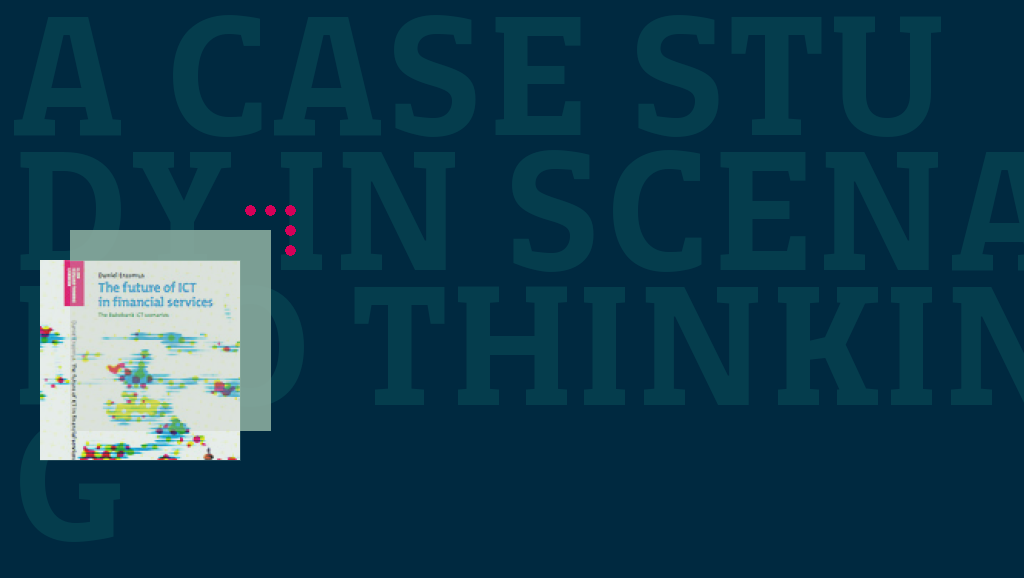If we describe scenario thinking as a structured way of anticipating possibilities, it should be a part of a strategy geared towards innovating responsibly. In order to better understand its practitioners’ aims, as well as current methodologies and practices in use, one could take a look at a book entitled The Future of ICT in Financial Services written by Daniel Erasmus and published by DTN press in Amsterdam.
The book represents a case study of work carried out by the company DTN in Rabobank, one of the world’s largest financial institutions. It guides the reader through the scenario planning process, from the philosophy underlying the idea through the practicalities and process to a postscript with conclusion and some critique of the process.
The study opens with an introduction to scenario thinking, from its conception in the 1970’s by Shell Group Planning, through its growth and evolution into what the author describes as “a methodology for enabling organizations to structurally anticipate change and incorporate external uncertainty into internal decision making”.
The author explains that scenarios are not meant to be predictions, they are not meant to perfectly represent future situations but that they challenge managers and executives into making proactive choices regarding the management of change. In order to do this different scenarios are created, that must be plausible but also challenge mainstream assumptions about the future. To do this they not only involve the managers involved in the target business, but also experts from other fields that may influence global development and therefore various fields within that development. These experts are interviewed and the resulting transcriptions or videos of the conversations are brought to meetings and discussed.
The process of scenario creation described in the book took about a year, with the management group meeting for a couple of days every few months in order to themselves create the scenarios. The process was followed by six months working on “the strategy”.
The main process and organizational elements can de summarized as follows: determining the focal question through interviewing the management team, assessing the uncertainties that could potentially effect the process through examining past trends and currently known facts, external consultations to gain a broader perspective and understanding the driving forces that surround the process.
Four scenario stories are then crafted that each describe a possible future and environment. The four scenario stories presented each cover a period of ten years, have a single paragraph description at the start followed by a finite breakdown of change through time. They address such issues as the spread of internet banking, the effect of the Olympic games, Flu pandemic, loss of international banking border controls and fashion. Each scenario story explains how banking will change as a result of a complex series of variables that are all effected by these environmental characteristics, for example in one scenario the banks become like enormous faceless finance factories leading to people feeling isolated and wanting to return to the days when they could go into their local branch and speak to the manager, and this should obviously effect the bank’s planning.
The book goes on to describe the uncertainties and driving forces involved in some detail, and then outlines each individual interview conducted with the external experts. The postscript is very short given that the resulting strategies discussed are obviously confidential and the book is a case study of the process and not the results.
In general the book is easy to read and interesting, brightly coloured and there are lots of power point style diagrams that try to express its particular line on the theory and practice of scenario planning.
















